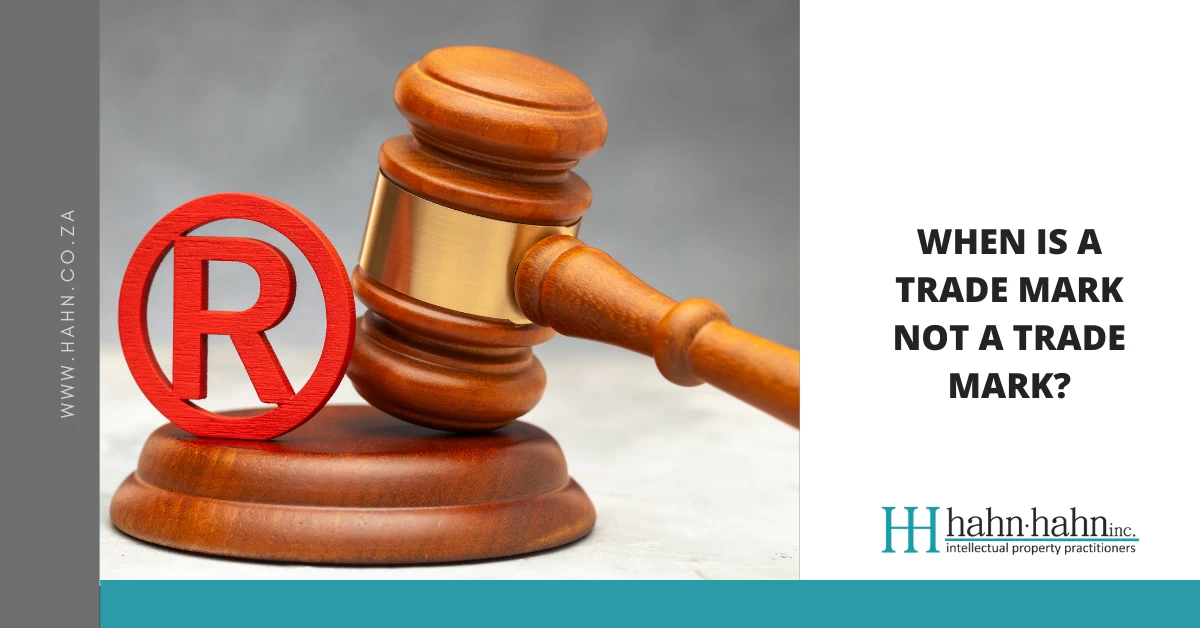
There are two ways in which trade mark rights can be acquired in South Africa. The first is statutorily through registration in terms of the Trade Marks Act 194 of 1993, and the second is in terms of the common law through use thereof only.
When one files application for registration of a trade mark, application is lodged at the Trade Marks Office. Within a day or two, the registry allocates a number to the application and sends a filing receipt. This in itself, gives no rights in the trade mark. All that the applicant has, at this point, is a trade mark application. It cannot claim it has a registered trade mark for the trade mark applied for.
The next step is that the application is examined to ensure that it complies with the requirements of the Trade Marks Act, but not that the use thereof will comply with any other law such as the Agricultural Products Standards Act, and also to ensure that it is not confusingly similar to any prior entry on the register. If the registry has any additional requirements before final acceptance, it will issue an official action to the trade mark applicant. Once the requirements in the official action have been complied with, an acceptance notice will be issued.
The acceptance notice must be published in the Patent Journal. Three months after publication are granted to any interested party to oppose the trade mark. If no opposition is entered, or any opposition entered is overcome, then the trade mark proceeds to registration. Such an opposition may be a drawn out affair which can take several years to finalise through the Courts. If the opposition is defeated a registration certificate is issued and the register is marked to the effect that the trade mark is registered.
It is at the time of registration that statutory trade mark rights come into existence in the trade mark. Until that date, there are no statutory rights in the trade mark. These rights, as soon as they exist, are backdated to the date on which the application was initially filed. This may cause some confusion, because, once registered, the rights appear to be back-dated to the application date, but before registration, there are no statutory rights in the trade mark at all. Other Acts, such as the Agricultural Products Act and regulations thereunder, provide that a proprietor of a registered trade mark has certain prohibitions relaxed e.g. the size of a brand name in a trade mark may be larger than the class designation of the product only if the trade mark is registered and no such relaxation is provided while the trade mark application is pending or is in opposition proceedings.
When trade mark rights come into existence, they are deemed to be effective throughout the whole country. Members of the public are deemed to have knowledge of the trade marks register (which is a public document).
Once a trade mark is registered in terms of the Trade Marks Act, the Act permits the proprietor to advise others that it has a registered trade mark. This is sometimes indicated through use of the symbol ®.It is a criminal offence to use the ® symbol, or to make any representation to others that the trade mark is registered prior to registration being completed. In addition, in terms of the Agricultural Products Standards Act it is a criminal offence to represent to an inspector that you have registered trade mark when the application is still pending and you only have a filing receipt. Trade mark rights are proved by reference the trade marks register (which is deemed to be the ultimate proof of the existence of statutory trade mark rights).
You will sometimes see use of the symbol “TM” to designate trade mark rights. Our Trade Marks Act does not refer to this symbol at all: in our law, the symbol has no meaning. Because, however, generally people identify the TM symbol with trade mark rights, it is commonly used in conjunction with pending trade marks (ie before the registration certificate is issued), or in respect of common law trade marks (more in this regard below).
There is no reason why the TM symbol cannot be used in respect of registered trade marks. There is no obligation to use the ® symbol in conjunction with registered trade marks.
Common law trade marks come into existence when a party uses a trade mark to such an extent that it acquires a reputation and goodwill in the mark. A common law trade mark is as strong as a statutory trade mark. Its existence is, however, more difficult to prove. In order to rely on a common law trade mark, you must prove that a reputation existed in the trade mark and the party that made unauthorised use of the trade mark should have been aware of the reputation. It could be difficult, in some instances, to prove that someone in Springbok was aware of use made of a trade mark in Polokwane, for example.
Where legislation refers to trade mark rights, it generally means statutory trade mark rights, as common law rights are difficult to prove objectively (without an approach to Court, for example). Laws such as the Agricultural Products Standards Act and Regulations related to dairy R1510 specifically refer to registered trade marks to clear up any uncertainty.
So, be very wary of claiming your brand name is a registered trade mark when you have merely applied for a trade mark and remember that there is in general no relaxation of requirements in terms of the Agricultural Products Standards Act and the various regulations thereunder for a pending trade mark application!
This article was co-authored by Vanessa Lawrance and Janusz Luterek. For more information on trade marks, please contact the writers at vanessa@hahn.co.za or janusz@hahn.co.za.
